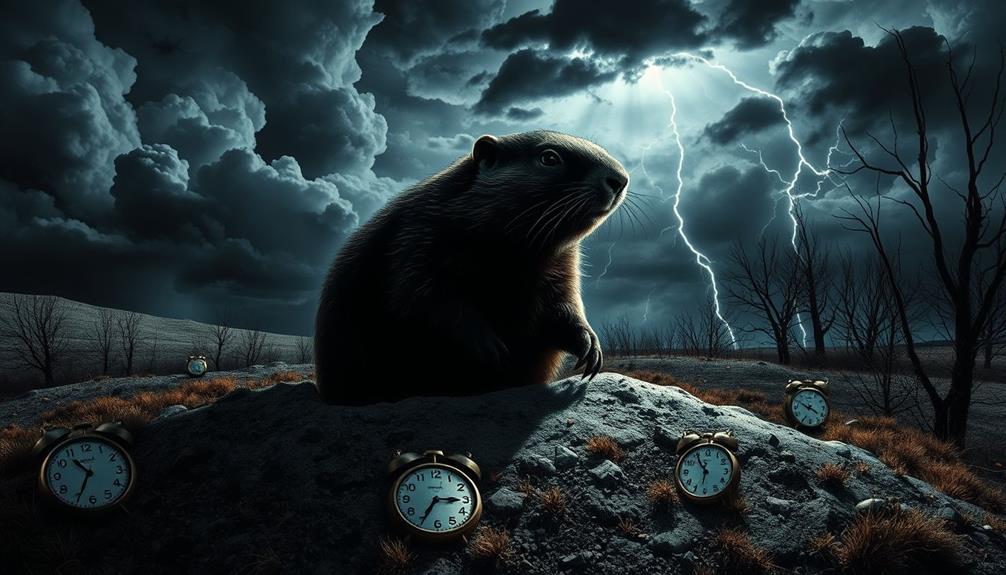News
Nico and Vinz Ages Revealed
Open the door to Nico and Vinz's world by uncovering their ages, adding depth to their music and personal connection – curious to learn more?

Nico is currently 30 years old, born on December 14, 1990, while Vinz is 35, born on January 29, 1986. Their Oslo, Norway roots heavily influence their unique musical style. Knowing these ages deepens the appreciation for their art and allows fans to establish a personal connection with the artists. Understanding the impact of their birthdates reveals a more holistic view of their journey and enriches the listening experience. These details provide insight into their music careers and allow listeners to engage with Nico and Vinz on a more intimate level, bringing their stories to life.
Key Takeaways
- Nico is 30 years old, born on December 14, 1990.
- Vinz is 35 years old, born on January 29, 1986.
- Ages shed light on their musical journey.
- Knowing their ages deepens fan connection.
- Birthdates enhance appreciation for their artistry.
Birthdates Confirmation and Background

The confirmation of Nico and Vinz's birthdates provides a foundational understanding of their backgrounds in the music industry.
Nico, born on December 14, 1990, and Vinz, born on January 29, 1986, both originate from Oslo, Norway. Knowing their birthdates not only solidifies their ages but also sheds light on the timeline of their musical journey.
Originating from Oslo, a city known for its vibrant music scene, Nico and Vinz's heritage plays a significant role in shaping their musical style and influences. Understanding their birthdates and background enhances the appreciation for their music, allowing fans to connect on a deeper level with the duo's artistic endeavors.
This knowledge provides context to their achievements and offers a glimpse into their musical evolution.
Unveiling the Real Ages
Confirmation of Nico and Vinz's birthdates now leads us to reveal the true ages of the duo. Nico, born on December 14, 1990, is currently 30 years old. Vinz, born on January 29, 1986, is 35 years old. Understanding their ages provides a fresh perspective on their musical journey and achievements. Below is a table summarizing their ages:
| Member | Birthdate | Age |
|---|---|---|
| Nico | December 14, 1990 | 30 |
| Vinz | January 29, 1986 | 35 |
Knowing Nico and Vinz's ages adds depth to their artistry and allows fans to connect with them on a more personal level. Stay tuned for insights into the impacts of this newfound knowledge in the upcoming section.
Impact of Knowing Birthdates
Understanding Nico and Vinz's precise birthdates greatly enhances the appreciation and contextual understanding of their music careers. Knowing that Nico was born on December 14, 1990, and Vinz on January 29, 1986, provides fans with a deeper connection to the artists. It adds a layer of personal insight into their backgrounds, allowing listeners to relate to their journey on a more intimate level.
Frequently Asked Questions
What Are Nico and Vinz's Real Names?
The real names of Nico and Vinz have not been disclosed. However, revealing their real names can provide a more personal connection for fans and offer insights into their identities beyond their stage personas.
Did Nico and Vinz Attend Music School?
Nico and Vinz did not attend music school. Despite their lack of formal training, the duo has achieved international success with their unique sound. Their journey showcases the power of raw talent and determination in the music industry.
Are Nico and Vinz Related?
Nico and Vinz are not related. Despite sharing a musical partnership, their connection is purely professional. Understanding their individual backgrounds and contributions to their music helps appreciate their collaboration and the unique talents they bring.
Have Nico and Vinz Won Any Awards?
Nico and Vinz have received several awards, including Best New Artist at the 2014 MTV Europe Music Awards and the Spellemann Award for Newcomer of the Year in 2012. Their unique sound has garnered critical acclaim worldwide.
Do Nico and Vinz Have Any Side Projects?
Nico and Vinz do not have any side projects as of now. Their focus remains on their music career, representing Norwegian music, and connecting with fans through their artistic journey. Their dedication to their craft is evident.
Conclusion
To sum up, the revelation of Nico and Vinz's actual birthdates acts as a key to opening the door to their musical world, enabling fans to connect with their artistry on a deeper level.
Like a map guiding us through the complex melodies of their songs, knowing their ages illuminates the path to understanding their cultural influences and the rich tapestry of their musical journey.
News
World of Solitaire: The Online Game That’s Addicting Millions
Lose yourself in the captivating world of Solitaire, where millions are hooked—discover the secrets behind its addictive charm and impact on players.

World of Solitaire is an online game that captivates millions, offering endless entertainment and engagement. With its roots tracing back over 200 years, this digital version hooks players looking for an enjoyable escape. Many find themselves engrossed as they solve puzzles and strategize moves. However, it's easy to lose track of time; a few minutes can quickly turn into hours. Recognizing the signs of excessive play is essential to maintain a healthy balance in life. If you're curious about the game's impact on players and the various versions available, keep exploring to uncover more fascinating details.
Key Takeaways
- Solitaire has captivated players for over 200 years, with its most popular variant, Klondike, being included in Microsoft Windows since 1990.
- The Microsoft Solitaire Collection features five variations and has over 242 million users, indicating its widespread appeal.
- Approximately 33 billion Solitaire games are played annually, showcasing its addictive nature and popularity among players worldwide.
- Playing Solitaire can lead to mood modification, providing stress relief but also potential signs of gaming addiction if played excessively.
- Variants like Spider, FreeCell, and Pyramid add depth and strategy, further enhancing the game's allure and addictiveness.
Overview of Solitaire's Popularity
Experiencing the thrill of Solitaire has captivated players for over two centuries. This timeless card game, also known as Klondike, saw a massive surge in popularity when Microsoft included it in Windows 3.0 back in 1990. Suddenly, millions of users had access to Solitaire, and it quickly became a staple on computers worldwide.
Today, the Microsoft Solitaire Collection offers five popular variations of the game, boasting over 242 million users, which showcases its widespread appeal and accessibility. The game not only provides entertainment but also serves as a tool for enhancing financial literacy through strategic thinking and planning.
Each year, around 33 billion games of Solitaire are played, with an astonishing 3.2 trillion cards dealt. This incredible engagement highlights not just the game's fun factor but also its ability to provide mental stimulation and stress relief. As you immerse yourself in your next Solitaire session, think about the countless others doing the same around the globe.
Furthermore, National Solitaire Day, celebrated on May 22 since 2018, emphasizes the cultural significance of the game and its dedicated fanbase. With such a rich history and ongoing popularity, Solitaire continues to hold a special place in the hearts of players everywhere.
Understanding Gaming Addiction

Gaming addiction can sneak up on you, especially with something as engaging as solitaire.
The rise of digital games highlights the importance of digital creativity in modern parenting, as families navigate the balance between screen time and real-life interactions.
If you find yourself playing for hours, ignoring responsibilities or relationships, it might be time to reflect on your habits.
Understanding the signs and psychological impacts of excessive play is essential to maintaining a healthy balance in your gaming life.
Definition of Gaming Addiction
Compulsive gaming often leads individuals to prioritize video games over daily responsibilities and relationships, marking the onset of gaming addiction. This condition is recognized by the World Health Organization (WHO) in its International Classification of Diseases. Fundamentally, gaming addiction manifests as a compulsive engagement in gaming activities, despite knowing the negative consequences it may bring.
Here's a quick overview of gaming addiction:
| Aspect | Description |
|---|---|
| Definition | Compulsive gaming despite negative impacts |
| Recognition | Included in WHO's International Classification |
| Behavioral Patterns | Similar to substance abuse with cravings and withdrawal |
| Prevalence | 1-10% of gamers may face problematic gaming behaviors |
Research shows that psychological factors, like escapism and the need for social connection, can drive excessive gaming, particularly among younger audiences. Gaming addiction is not just about gameplay; it can lead to significant impairments in personal, social, or occupational functioning. Understanding this definition helps you recognize the seriousness of the issue and its potential impact on your life.
Signs of Excessive Play
Recognizing the signs of excessive play is essential for understanding gaming addiction, especially in games like World of Solitaire. If you find solitaire games dominating your daily activities, it might be time to take a step back.
Salience, where the game overshadows your responsibilities, is a critical indicator. Are you neglecting family, work, or school commitments because you can't pull yourself away from the screen? This pattern can resemble emotional instability often seen in BPD-coded characters, which highlights the importance of balance in life and relationships.
Another sign is a preoccupation with future games, even when you're not playing. If you're constantly thinking about the next round, it could signify an unhealthy attachment.
Additionally, if you notice yourself spending more time on solitaire games to alter your mood, you may be developing tolerance, needing more gameplay to achieve the same satisfaction.
Withdrawal symptoms like irritability and moodiness can also occur when you try to cut back on your playing time. If you feel discomfort or frustration when not engaging with solitaire, it's a clear signal that the game has taken on a more significant role in your life than it should.
Recognizing these signs is the first step toward addressing potential gaming addiction.
Psychological Impact on Players
The psychological impact on players of games like World of Solitaire can be profound, often intertwining with their daily lives. You might find yourself playing to escape stress, leading to a cycle where the game becomes your go-to coping mechanism. This can result in neglecting responsibilities and strained relationships, as preoccupation with the game takes precedence over real-life obligations.
| Signs of Impact | Emotional Responses | Consequences |
|---|---|---|
| Increased playtime | Stress relief | Neglected responsibilities |
| Mood modification | Temporary escape | Interpersonal conflicts |
| Loss of control | Frustration | Relapses into excessive play |
As you continue to indulge in solitaire, you may develop a tolerance, needing to play more to achieve the same relief. While there's no definitive evidence that solitaire is a genuine addiction, the behavioral patterns echo those seen in other forms of addiction. It's essential to recognize the signs and take steps to moderate your playtime before it disrupts your life further. Understanding these psychological impacts can help you regain control and enjoy the games responsibly.
Signs of Solitaire Addiction

If you find yourself spending excessive time on solitaire, it might be time to take a step back. Neglecting your responsibilities at work or home can signal that the game is taking priority over what really matters.
Additionally, if you notice that your mood swings depend on your gameplay, you could be experiencing patterns that suggest an unhealthy attachment to the game.
It's important to recognize that just as astrological influences can shape our behaviors and perceptions in relationships, they may also play a role in how we engage with activities like gaming, reflecting deeper emotional patterns that deserve attention.
Trust issues in relationships can manifest in various forms, including how we cope with stress through distractions.
Excessive Time Engagement
Often, players find themselves spending excessive amounts of time immersed in solitaire, which can lead to a troubling neglect of family, work, or school responsibilities. This pattern mimics behaviors often associated with addiction, revealing signs that you may need to evaluate your relationship with the game.
Similar to how astrology and beauty standards can shape perceptions, the allure of solitaire can captivate individuals, making it challenging to disengage.
Here are some indicators of excessive time engagement in card games like solitaire:
- Preoccupation: You find your thoughts consistently drifting back to solitaire, even during important tasks.
- Increased Playtime: You notice that you need to play longer sessions to achieve the same enjoyment, suggesting a development of tolerance.
- Social Conflicts: You continue playing despite it interfering with your social activities or personal interests.
- Withdrawal Symptoms: You experience irritability or moodiness when trying to cut back on your solitaire sessions.
Recognizing these signs is vital for understanding how excessive time engagement in solitaire can impact your daily life and relationships.
If you identify with these behaviors, it might be time to take a step back and reassess how card games are fitting into your routine.
Neglecting Responsibilities
Neglecting responsibilities can become a significant issue for solitaire players who find themselves prioritizing the game over their daily obligations. You might notice that family, work, or school tasks take a backseat as solitaire becomes your main focus.
When you start to feel that your gaming sessions overshadow other interests and relationships, it's a sign of salience—a key indicator of potential addiction. It's vital to recognize that just as effective weight loss strategies require discipline and balance, managing your gaming habits also demands self-awareness and moderation.
You may also find yourself continuing to play despite negative consequences, like strained relationships or declining performance at work or school. If you've been using solitaire as a coping mechanism for stress or negative emotions, it's likely leading to increased playtime, pushing important responsibilities further aside.
Recognizing this obsession is important. What once was a casual pastime may transform into a compulsive habit, causing you to ignore vital duties.
The short-term enjoyment of solitaire can quickly fade when you realize the long-term costs, such as damaged relationships and missed deadlines. If you're neglecting responsibilities for the sake of playing solitaire, it's time to reflect on your gaming habits and consider regaining control over your life.
Mood Modification Patterns
Solitaire can become more than just a game; it can morph into a way to alter your mood. You might find yourself trapped in a cycle of mood modification, using solitaire to escape stress or negative emotions.
Here are four signs that your gaming habits may be leaning toward unhealthy:
- Constant Thoughts: You may think about future games constantly, neglecting other daily activities.
- Tolerance Development: You might notice that you need to play longer to achieve the same calming effect, indicating increasing tolerance.
- Withdrawal Symptoms: When you can't play, you could feel irritable or moody, revealing a reliance on the game.
- Emotional High: You might experience a noticeable "buzz" during gameplay, signaling an emotional escape that reinforces your need for mood modification.
Recognizing these patterns is essential.
While solitaire can be a fun distraction, it's important to monitor how it affects your mood and daily life. If you find yourself relying on the game more than you should, consider seeking balance before it spirals into an addiction.
Behavioral Patterns in Gaming

Many players find themselves drawn into the enchanting world of solitaire, where the thrill of the game can blur the lines between casual enjoyment and compulsive behavior. You might start by playing just a few rounds, but soon, you find your thoughts consumed by future games, even when you're not at your screen. This preoccupation can signal a shift from playing a simple card game to developing an obsession.
Just like dogs require a balanced diet for their well-being, maintaining a healthy gaming routine is vital for your mental health as well. As you chase the exhilarating feeling of a win, you might use solitaire as a way to cope with stress, similar to how understanding safe foods for dogs can alleviate concerns about their health. This can lead to heightened feelings of arousal or tranquility, which only deepens your connection to the game.
Over time, you may notice a need to invest even more time to achieve the same satisfaction, showcasing a classic pattern of tolerance. If you decide to cut back, you might face withdrawal symptoms like irritability or moodiness, revealing just how intertwined solitaire has become with your emotional state.
Recognizing these behavioral patterns can help you understand your relationship with this online game that's captivated millions. Balancing your time might be essential to maintaining your well-being.
Benefits of Playing Solitaire

Engaging in a game of solitaire can greatly boost your cognitive abilities while providing a much-needed escape from daily stressors. As you draw cards from the stock and strategize your next move, you're not just playing a game; you're sharpening your mind.
A holistic approach to mental wellness, including activities like playing solitaire, can greatly reduce stress and enhance overall health, similar to how a balanced lifestyle contributes to heart health.
Here are some key benefits of playing solitaire:
- Enhanced Problem-Solving Skills: Each game requires you to think critically and develop strategies, improving your mental agility.
- Stress Relief: The addictive nature of solitaire allows you to unwind, helping you relax after a hectic day.
- Improved Concentration: Focusing on the game can greatly enhance your attention span, making it especially useful for those with ADHD.
- Boosted Self-Esteem: Tracking your progress as you master the game can lead to increased confidence and a sense of accomplishment.
Variants of Solitaire Games

Card games like solitaire come in various exciting variants, each offering a unique twist on the classic gameplay. Klondike Solitaire is the most recognized variant, where you organize cards into four ascending piles across seven tableau columns. You can choose to cycle through the deck once or three times, adding different strategies to your game.
The popularity of these variants illustrates the impact of niche markets in the gaming industry, as players seek specialized experiences that cater to their preferences, showcasing how niche marketing strategies often yield higher ROI.
If you're looking for a challenge, try Spider Solitaire, which allows you to use one to four decks. It emphasizes building suits and managing hidden cards, making it a favorite for those who enjoy strategic depth.
FreeCell Solitaire stands out with all cards face-up from the start, considerably reducing the chances of encountering an unsolvable game.
Pyramid Solitaire presents an interesting challenge by requiring you to remove cards from a pyramid formation by pairing them to total 13, which emphasizes strategic planning.
For a faster pace, Golf Solitaire encourages quick thinking as you transfer cards to the waste pile while managing your tableau layout. Each of these variants provides a fresh experience while keeping the essence of classic solitaire alive, ensuring that every game feels both familiar and exhilarating.
Conclusion
In a world where distractions are everywhere, Solitaire offers a simple escape that can easily turn into an obsession. You've seen the allure as you shuffle cards and strategize your next move, but it's crucial to find balance. While the game can sharpen your mind and provide a welcome break, be mindful of how much time you spend playing. After all, even the most enchanting games can turn into a trap if you let them consume your life.
News
Passover 2024: The Celebration That Could Change Your Life
Make this Passover a transformative experience that inspires personal growth and deepens your commitment to justice—discover how it can change your life.

Passover 2024, beginning on the evening of April 22, is more than just a holiday; it's a chance for personal growth and reflection. As you gather around the Seder table, you'll connect with rich traditions that celebrate freedom and justice. Engaging in storytelling and sharing symbolic foods deepens your empathy and understanding of historical struggles. These themes resonate with today's social issues, encouraging you to contemplate your role in promoting justice. Through this celebration, you can renew your commitment to community and activism. Discover the transformative power of Passover and what it can mean for you this year.
Key Takeaways
- Passover 2024 emphasizes themes of freedom and justice, inspiring personal reflection on the importance of social responsibility and community bonds.
- The Seder meal offers an opportunity for storytelling, fostering deep connections to historical struggles and contemporary issues that resonate today.
- Engaging in Passover rituals, such as the Haggadah reading, encourages intergenerational dialogue and a commitment to uphold justice and empathy.
- The symbolic foods consumed during Passover serve as reminders of resilience, renewal, and the ongoing fight for freedom across generations.
- Participating in Passover can empower individuals to advocate for human rights, inspire collective action, and contribute to repairing the world.
Overview of Passover 2024
Kicking off the celebration on the evening of April 22, 2024, Passover invites you to reflect on the profound history and themes of freedom it represents. This significant holiday commemorates the Exodus from Egypt, when the Jewish people escaped slavery over 3,000 years ago.
Passover can also serve as a reminder to examine our relationships, particularly in the context of signs and symptoms of narcissism, as we gather with family and friends. As you partake in the Seder meal, a cornerstone of Passover tradition, you'll find it essential to foster empathy and connection with those around you.
The Seder meal unfolds over the first two nights, featuring storytelling, symbolic foods, and the reading of the Haggadah. You'll engage in customs that deepen your connection to this rich history, such as removing chametz—leavened foods—from your home and eating matzah. The matzah symbolizes the urgency of the Israelites' departure and serves as a reminder of their struggles for freedom.
Passover isn't just about historical events; it emphasizes themes of justice and community bonding. During the Seder, you're encouraged to reflect on contemporary social issues, linking the past to the present.
As you celebrate, you'll find that Passover is a time to renew your commitment to freedom, empathy, and unity within your community.
Historical Significance of Passover

Understanding the historical significance of Passover deepens your appreciation for the themes of freedom and justice that resonate throughout the celebration. This holiday commemorates the Jewish people's liberation from slavery in Egypt, a pivotal event that occurred over 3,400 years ago, marking the birth of the Jewish nation.
The narrative is rooted in the Book of Exodus, which details the ten plagues God inflicted upon Egypt, ultimately leading to the Israelites' liberation through Moses. Additionally, just as gold historically retains value during market volatility, the story of Passover underscores the enduring importance of faith and resilience in the face of adversity.
The term "Passover" itself signifies God "passing over" Jewish homes during the tenth plague, sparing them from the angel of death. This act of divine intervention highlights the importance of faith and resilience.
During Passover, the Seder meal serves as a focal point, where the Haggadah recounts the story of the Exodus, emphasizing themes of oppression and freedom.
Moreover, Passover coincides with the beginning of the agricultural cycle, celebrating the first harvest. This connection reinforces the Jewish identity and foundational values centered on liberation and justice, reminding you of the ongoing struggle for freedom that continues to resonate in today's world.
Rituals and Traditions

During Passover, the Seder meal takes center stage, where you'll engage in storytelling and enjoy symbolic foods that connect you to the history of the Israelites.
This celebration isn't just about the food; it also emphasizes the importance of family bonds and shared traditions, similar to how celebrating family bonds enhances our connections.
You'll find that matzah represents their hurried escape from Egypt, while strict rules around chametz remind you of the importance of spiritual cleanliness.
Understanding these rituals and traditions not only enhances your observance but also deepens your connection to generations past.
Seder Meal Significance
The Seder meal, a centerpiece of Passover celebrations, holds profound significance for Jewish families as they gather to commemorate their ancestors' liberation from slavery in Egypt. During this ritual dinner, you'll find Seder tables adorned with symbolic foods that embody the themes of freedom and redemption.
The Passover Haggadah guides the evening, allowing participants to read and engage with the story of the Jewish people's escape from bondage. Additionally, the atmosphere of the Seder can enhance connection, much like how trust issues in relationships can affect interpersonal dynamics.
As you partake in this meaningful experience, you'll drink from four cups of wine, each representing a different aspect of the joyous journey to freedom. Sharing the Seder meal is more than just a tradition; it's an opportunity to connect with family and pass down stories through generations.
Engaging children is essential, often highlighted by the fun ritual of hiding the Afikoman, which encourages their active participation.
Through storytelling, eating, and singing, the Seder meal fosters a sense of community and continuity, reminding everyone at the table of their shared history. By celebrating Passover in this way, you're not only honoring your ancestors but also instilling these values in future generations.
Symbolic Foods Explained
At the heart of the Seder meal lies a collection of symbolic foods, each one rich with meaning and purpose. You'll find bitter herbs, or maror, which serve as a poignant reminder of the bitterness of slavery your ancestors endured. As you taste these herbs, reflect on the struggles faced during that time, allowing yourself to connect with those emotions and engage in a deeper level of mindfulness practices.
Matzah, the unleavened bread, represents the haste with which the Israelites fled Egypt, reminding you of their oppression and the quest for freedom.
On the Seder plate, you'll also see a roasted shank bone, symbolizing the Paschal lamb sacrificed during the Exodus. This represents God's protection over the Jewish people during the final plague.
The egg, another key element, symbolizes renewal and rebirth, embodying hope for redemption and the arrival of spring.
Lastly, a green vegetable, often parsley, is dipped in salt water during the Passover seder to signify the tears shed during slavery. This act highlights the importance of remembering the suffering of your ancestors.
Each of these symbolic foods enriches your Seder experience, connecting you to history and tradition in profound ways.
Matzah and Chametz Rules
Embracing the traditions of Passover means understanding the pivotal roles of matzah and chametz in the holiday's observance. Matzah, or unleavened bread, symbolizes the haste of the Israelites' escape from Egypt, representing freedom from oppression. During Passover, the consumption of matzah is essential while chametz—any leavened food—is strictly prohibited. This means you'll need to thoroughly clean your home to eliminate all traces of chametz before the holiday begins.
Regular dietary restrictions during this time can be likened to the importance of understanding personal risk factors before scheduling mammography screenings for breast cancer detection.
The prohibition of chametz lasts for the entire eight days, and that requires special attention to your dietary restrictions. Many families use designated dishes and utensils to prevent any contamination from leavened products.
Additionally, Ashkenazi Jews often avoid kitniyot, such as legumes, adding another layer to the dietary rules during Passover.
One popular dish to enjoy is matzah ball soup, showcasing how you can still indulge creatively within the constraints of Passover's dietary laws.
Themes of Freedom and Hope

As you gather around the Seder table, you connect with a rich tradition of liberation that echoes through generations.
Each story shared not only highlights the struggle for freedom but also ignites hope for a better future.
Through this communal experience, you can also recognize how letting go of past grievances can foster new beginnings, similar to the journey of soulmate splitsville.
Liberation Through Tradition
Passover consistently serves as a powerful reminder of the enduring themes of freedom and hope woven into Jewish tradition. This sacred holiday commemorates the liberation of the Jewish people from slavery in Egypt, emphasizing resilience and the pursuit of justice. The Seder meal, central to the celebration, invites you to engage with the rich tapestry of storytelling, symbolic foods, and the reading of the Haggadah, which recounts the Exodus.
During Passover, you'll eat matzah, the unleavened bread that symbolizes the haste of the Israelites' escape, a poignant reminder of oppression and the aspiration for dignity. As you gather around the table, the themes of hope and resilience resonate deeply, encouraging reflection on current injustices.
| Symbolic Element | Meaning |
|---|---|
| Matzah | Represents the haste of liberation |
| Seder Meal | A ritual of storytelling and reflection |
| "Next year in Jerusalem!" | A hopeful aspiration for peace |
Through this tradition, you connect with your heritage, fostering a commitment to justice and a collective responsibility to advocate for those still facing oppression. Passover offers a powerful blueprint for a hopeful future.
Intergenerational Narratives of Hope
The rich traditions of Passover not only celebrate the past but also foster a connection across generations, weaving together personal and collective narratives of hope.
At the heart of the Seder lies the Haggadah, which outlines the Exodus story and serves as an essential tool for families to pass down values of resilience and hope. During the Seder, intergenerational dialogue flourishes as participants reflect on the ongoing struggle for freedom and justice, echoing the experiences of their ancestors.
Engaging children in this process, similar to how play enhances cognitive development and nurtures their curiosity, allows them to actively participate through the tradition of asking questions. This practice instills a sense of responsibility to honor their heritage while advocating for justice. The themes of liberation and hope resonate deeply, prompting conversations about contemporary struggles faced by those enduring oppression today.
As the Seder concludes, the proclamation of "Next year in Jerusalem!" symbolizes a hopeful aspiration for peace and redemption.
This powerful statement reinforces the continuity of hope, reminding you that each generation carries forward the torch of resilience and the dream of a brighter future.
Empowering Collective Action
At the heart of Passover lies a powerful call to action, encouraging you to engage with themes of freedom and hope. This holiday isn't just about remembering the Exodus; it's about understanding the ongoing struggle against oppression.
The Seder acts as a platform for meaningful conversations around social justice, prompting you to reflect on the plight of those who are still marginalized today. As society faces new challenges, the need for ethical perspectives, similar to the role of AI Ethicist Jobs, becomes increasingly relevant in shaping a just future.
By participating in these discussions, you foster a sense of collective action that can inspire real change within your community. Remembering the historical significance of liberation from Egypt urges you to commit to fighting injustice in today's world.
Each shared story during Passover reinforces the importance of community resilience, as families come together to learn from the past and envision a better future.
This holiday emphasizes Tikkun Olam, the Jewish concept of repairing the world, urging you to take steps towards peace and freedom. By embracing collective action, you can contribute to a movement that uplifts vulnerable communities and fosters unity.
Passover invites you not just to celebrate, but to act, ensuring that the themes of freedom and hope resonate far beyond the Seder table.
Contemporary Relevance

Embracing the themes of freedom, love, and justice during Passover, many find a profound connection to today's socio-political landscape. This holiday invites you to reflect on ongoing humanitarian crises and the plight of the oppressed. The Seder is not just a meal; it's a platform for open-hearted conversations about justice and community responsibility.
Passover encourages you to remember the Exodus, fostering awareness of both historical and contemporary oppression. As you gather with loved ones, consider how the messages of this holiday can inspire empathy and solidarity with those suffering, including victims of conflict and hostages.
Here's a quick look at how Passover's themes resonate today:
| Theme | Modern Application | Community Impact |
|---|---|---|
| Freedom | Advocacy for human rights | Collective action against injustice |
| Justice | Support for marginalized voices | Strengthening community bonds |
| Exodus | Remembering past struggles | Inspiring future resilience |
Preparing for the Celebration

How do you prepare for Passover in a way that honors its rich traditions? Start by thoroughly cleaning your home to remove all chametz. This practice symbolizes the importance of liberation from oppression and sets the tone for the holiday.
In addition to this, consider emphasizing personal growth during this time, as it's a period for reflection and renewal, much like the themes found in astrological insights for personal development. Make sure to set aside special dishes and utensils for Passover to avoid any contamination with chametz, highlighting the significance of dietary laws during this sacred time.
As you approach the Seder meal, scheduled for April 22 and 23, 2024, gather the symbolic foods like matzah, bitter herbs, and haroset. Each item plays a crucial role in recounting the Exodus story, so discuss their meanings with your family.
Encourage everyone to share personal stories of liberation and reflect on their own experiences, which can deepen the connection to the holiday's historical significance.
During the Seder, engage in conversations about current events to draw parallels between the themes of freedom and justice from the Exodus narrative and today's world.
Conclusion
As you gather around the Seder table, imagine the matzah as the wings of a bird, lifting you from the shackles of the past. Each cup of wine reflects the vibrant hues of hope, painting your future with possibilities. Embrace the stories of freedom and resilience, letting them weave into your own life's tapestry. This Passover, let the echoes of liberation guide you, transforming your celebration into a powerful journey of renewal and self-discovery.
News
Groundhog Day 2024: Will It Predict the End of the World?
Groundhog Day 2024 brings whimsical predictions, but could Phil’s forecast reveal deeper truths about our future? Discover the surprising significance behind this cherished tradition.

Groundhog Day 2024 shows Punxsutawney Phil not seeing his shadow, predicting an early spring. But don't get too carried away; this whimsical forecast isn't about predicting the end of the world. Phil's accuracy has dropped to around 30% over the last decade, making his predictions more folklore than reliable weather advice. While the event draws thousands and has deep cultural roots, it doesn't hold any apocalyptic significance. Instead, it's centered on community celebration. Stick around and you'll uncover more about the cultural traditions and how various prognosticators contribute to this beloved event.
Key Takeaways
- Groundhog Day primarily forecasts seasonal changes, not apocalyptic events, focusing on early spring predictions rather than end-of-world scenarios.
- Punxsutawney Phil's 2024 prediction indicates an early arrival of spring, opposing any notions of global doom.
- Phil's historical accuracy is below 50%, making him an unreliable source for predicting significant events like the end of the world.
- The tradition has cultural significance and community engagement rather than any serious implications regarding global disasters.
- Alternative weather prognosticators, like Buckeye Chuck, also emphasize seasonal transitions, further distancing the celebration from apocalyptic predictions.
Phil's Prediction for 2024
On Groundhog Day 2024, Punxsutawney Phil made an optimistic prediction by not seeing his shadow, signaling an early arrival of spring. This year's forecast is a rejuvenating change from the previous three years, where Phil predicted six more weeks of winter.
For many, Phil's cheerful proclamation is a welcome sign after enduring the long, cold months of winter. Additionally, embracing a holistic lifestyle can help improve your overall wellness during this changing season.
As you celebrate this quirky tradition, remember that Phil's prediction aligns with the National Weather Service's forecast of warmer temperatures expected in the eastern U.S. for February. While the years of winter seem endless, Phil's decision to not see his shadow offers a glimmer of hope for early spring.
With 139 years of Groundhog Day tradition behind us, you might find yourself among the thousands of attendees who gather to witness this iconic moment.
Despite Phil's historical accuracy dropping below 50 percent in the 21st century, his prediction still sparks excitement and anticipation.
Accuracy of Groundhog Predictions

Despite the charm of Groundhog Day, the accuracy of Punxsutawney Phil's predictions raises eyebrows. With an accuracy rate of about 30% over the past decade, it's difficult to take his forecasts seriously. Here are a few key points to reflect on:
1. Phil has seen his shadow 107 times but hasn't seen it 21 times, with 10 years lacking any records. Additionally, much like the unpredictable nature of market trends, Phil's forecasts seem to be more about tradition than reliability, making one question the validity of folklore in predicting outcomes.
2. In the 21st century, his accuracy plummets below 50%, making you question the reliability of a groundhog for weather predictions.
3. The National Oceanic and Atmospheric Administration (NOAA) provides scientifically grounded forecasts that starkly contrast with Phil's folklore-based predictions.
Despite these discrepancies, public interest in Groundhog Day remains high. This fascination doesn't stem from Phil's meteorological accuracy but rather the cultural significance and tradition surrounding the event.
While you might enjoy the whimsical nature of Groundhog Day, it's crucial to acknowledge that Phil's predictions are far from dependable. So, as you celebrate this quirky holiday, remember to keep one eye on the actual weather forecasts provided by experts rather than relying solely on a groundhog's shadow.
Cultural Background of Groundhog Day

Groundhog Day, celebrated each year on February 2, springs from a rich tapestry of cultural traditions. Its origins trace back to the Christian observance of Candlemas, which marks the midpoint between the winter solstice and the spring equinox. This quirky tradition began in 1887 in Punxsutawney, Pennsylvania, where Punxsutawney Phil became the iconic weather prognosticator.
The choice of groundhogs relates directly to their hibernation patterns; as they emerge from their burrows at this time, their behavior symbolizes the shift from winter to spring. This celebration also echoes ancient Celtic festivals that celebrated seasonal changes and the return of light.
Groundhog Day has evolved into a beloved American tradition, fostering community spirit and drawing thousands of spectators each year, both in-person and through media coverage. Here's a glimpse of what this celebration means:
| Aspect | Emotion |
|---|---|
| Community Gathering | Joyful Unity |
| Anticipation | Excitement |
| Tradition | Nostalgia |
| Nature's Rhythm | Hope |
| Seasonal Change | Renewal |
As you join in the festivities, recognize the cultural significance behind the fun!
Alternative Weather Prognosticators

Have you ever wondered how other regions celebrate Groundhog Day? While Punxsutawney Phil might steal the spotlight, alternative weather prognosticators add their own flair to the tradition. In some communities, the incorporation of Aboriginal resources adds a cultural dimension to local celebrations, reflecting the unique heritage of the area.
Here are some remarkable contenders:
- Buckeye Chuck: In Ohio, Buckeye Chuck has become an essential part of the festivities, drawing crowds and attention akin to Phil's famous event. His predictions are enthusiastically awaited by locals, creating a unique atmosphere.
- Staten Island Chuck: Known for his forecasts in New York, Staten Island Chuck has cultivated a loyal fanbase. Each year, fans gather to hear his prediction, reinforcing the community spirit surrounding Groundhog Day.
- Regional Variations: Each groundhog's forecast showcases the diversity of weather traditions across the country. This variety highlights how different communities embrace the day, making it a celebration of local culture.
While Punxsutawney Phil remains the most famous groundhog, these alternative prognosticators contribute to the charm of Groundhog Day. Their unique attributes not only enrich the festivities but also strengthen regional identities, proving that weather predictions can bring people together in delightful ways.
Celebrations and Events Surrounding Phil

Every year, the Punxsutawney Phil festivities transform the small town of Punxsutawney, PA, into a vibrant hub of celebration. Thousands flock to witness Phil's prediction, showcasing the community's spirit. The event features unique activities such as "Lunch With Phil," a talent show, and culminates in the lively Hogspitality Village and a "Party All Night" event.
The festivities have grown considerably, thanks to corporate sponsorship and media interest, reaching a wider audience. In 2024, Phil's prediction was livestreamed by PCNTV and The Associated Press, allowing even those far away to join the fun.
| Event | Description |
|---|---|
| Lunch With Phil | Dine with local celebrities and Phil |
| Talent Show | Showcase of local talent |
| Hogspitality Village | Food, drink, and entertainment stalls |
| Party All Night | Evening celebration with live music |
Phil's prediction isn't just an event; it's a celebration of community and tradition, enriched by the involvement of other prognosticators like Buckeye Chuck and Staten Island Chuck. This diversity adds excitement and keeps the festivities fresh each year.
Conclusion
As you gather with friends on that chilly February morning, the anticipation crackles in the air like a fresh snowfall. Phil emerges, his fur glistening in the soft winter light, while you hold your breath, hoping for an early spring. Whether he predicts six more weeks of winter or not, the magic of Groundhog Day lingers. It's more than just a forecast; it's a celebration of traditions, laughter, and the warmth of community, reminding us that life goes on, come what may.
-

 News4 months ago
News4 months ago50 Cent's Journey Unveils Dark Ancestral Truths
-

 News4 months ago
News4 months agoSpider-Man Showdown: Star Performances Unveiled
-

 News4 months ago
News4 months agoCharacter Showdown: Riley Vs. Maya Personality Quiz
-

 News4 months ago
News4 months agoCelestial Insights: Thriving in December Horoscopes
-

 News4 months ago
News4 months agoElodie Yung's Secret Marriage Revelation Sparks Curiosity
-

 News4 months ago
News4 months agoNYC's Cinematic Backdrop: Orange Is the New Black
-

 News4 months ago
News4 months agoAmbani Son Wedding: Glitz, Glamour & Tradition
-

 News4 months ago
News4 months agoExpert Insights: The Journey to Conception


















